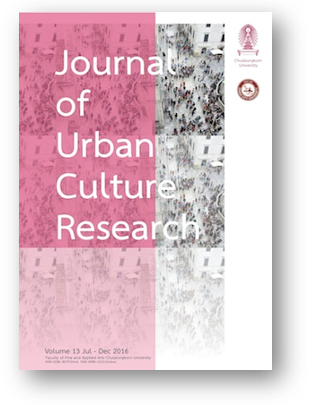Between Rome and the Sea: Ancient and Recent Gateways to the Eternal City
DOI:
https://doi.org/10.14456/jucr.2016.12Keywords:
Rome, Urban Planning, Urban Spaces, Urban Design, Trajan’s Port, Shinkel, Libera, Aymonino, LigorioAbstract
While traveling through the flat expanse stretching over its southwestern area, it is possible to see the unusual image of Rome as a city that overlooks the sea. In this area, rich of landfalls, many buildings act as gateways, some of which of international relevance, such as the “Leonardo da Vinci” intercontinental airport. Others accesses are only imagined by architects, from Karl Friedrich Schinkel’s Laurentinum – his reconstruction of Plinius’s Villa – to Adalberto Libera’s projects both for the seafront of Castel Fusano and for the Gateway to Sea. Over all, the ancient seaport of Rome is a potential engine of development and at the same time a symbol of historical memory. A perfect geometrical shape, the hexagonal port’s basin seems to imitate the planimetric shape of Rome’s historical centre that, through a translation of meaning, is cast toward the sea, in a sense prefiguring its destiny.
Downloads
Published
How to Cite
Issue
Section
License
Authors authorize the JUCR to publish their materials both in print and online while retaining their full individual copyright. The copyright of JUCR volumes is retained by Chulalongkorn University.
The views and opinions expressed herein are those of the individual author(s) and do not necessarily reflect the policies or opinions of the Journal (JUCR), it editors and staff, Chulalongkorn University, or Osaka Metropolitan University.








